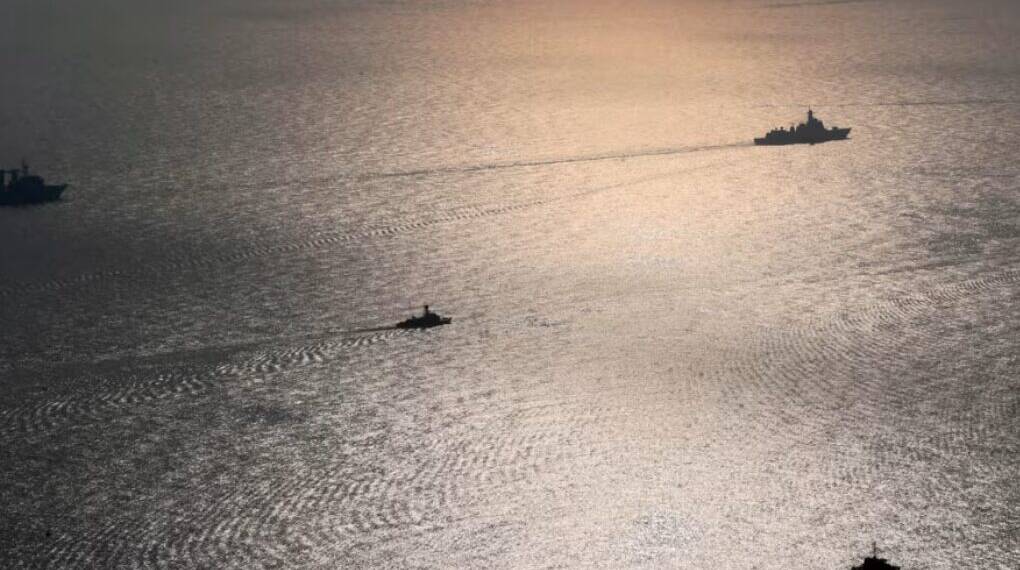On July 23, 2025, Russia commenced one of its largest naval exercises in recent years, dubbed the “July Storm”, involving over 150 warships and support vessels, more than 120 aircraft, 10 coastal missile systems, and upwards of 15,000 military personnel.
The drills span four key maritime theaters: the Pacific Ocean, Arctic Ocean, Baltic Sea, and Caspian Sea, drawing forces from Russia’s Northern, Pacific, and Baltic Fleets, as well as the Caspian Flotilla. The exercise will run through July 27, with an overarching goal of testing and enhancing the combat readiness of Russia’s naval forces under Admiral Alexander Moiseev, Commander-in-Chief of the Russian Navy.
The Strategic Objectives of the Drills
According to the Russian Defense Ministry, the “July Storm” drills aim to assess and improve the fleet’s ability to conduct non-standard and complex operational tasks, focusing on the integrated use of long-range precision weaponry, advanced military technology, and unmanned systems such as drones and unmanned boats. These capabilities form a crucial element of modern naval warfare, and their effective deployment is a priority for the Russian Navy’s evolving operational doctrine.
The exercises are comprehensive and multifaceted. Naval crews will rehearse:
- Deployment to combat zones
- Anti-submarine warfare operations
- Defense of naval bases and maritime economic zones
- Repulsion of aerial attacks, including enemy drones and unmanned boats
- Ensuring maritime navigation safety
- Coordinated strikes on simulated enemy targets and naval groupings
More than 950 units of military and specialized equipment support these activities, underscoring the scale and technical complexity of the maneuvers.
Symbolic Significance Amidst Geopolitical Tensions
The timing and scale of the “July Storm” exercises carry symbolic weight, reflecting Moscow’s intent to demonstrate naval strength and operational flexibility amid persistent tensions with NATO and heightened military activity in regions such as the Baltic Sea. Recent NATO drills in the Baltic area and moves toward establishing forward operating bases near Russia’s borders have prompted Moscow to underscore its vigilance and readiness.
Deputy Foreign Minister Alexander Grushko recently emphasized Russia’s resolve to counter any threats emanating from NATO’s expanding military presence, and the naval drills reinforce this posture.
Ripples of the “July Storm” are likely to be felt diplomatically and militarily, as Moscow projects an image of a modernizing navy capable of defending its maritime interests across multiple oceans and seas.
Operational Challenges Against a Backdrop of Naval Losses
Despite asserting its position as the world’s third most powerful navy after China and the United States, Russia’s naval capabilities face notable operational challenges. The Black Sea Fleet, once a pillar of Russian maritime power, has suffered substantial losses during the ongoing conflict in Ukraine. Key assets such as the cruiser Moskva have been sunk, and the fleet has retreated from the Sevastopol base, substantially limiting Russia’s ability to control the Black Sea.
Nevertheless, the Russian navy retains a capacity for long-range missile strikes and remains capable across other strategic maritime theaters. The “July Storm” drills serve to showcase remaining strengths while enhancing interoperability among various fleet commands and augmented technological assets.
Unmanned Systems and Precision Weaponry
One of the hallmarks of the exercises is the prominent use of unmanned systems, including unmanned aerial vehicles (UAVs) and unmanned surface vessels, reflecting the shift in modern naval combat toward remote and autonomous platforms. Complemented by long-range precision-guided weapons, these technologies are increasingly central to Russia’s naval doctrine, enabling greater reach and lethality while potentially reducing risk to personnel.
The extensive participation of over 120 aircraft underscores the multi-domain nature of the drills, integrating air and sea power for comprehensive maritime defense and offensive operations.
Command and Control Under Admiral Moiseev
Admiral Alexander Moiseev, Russian Navy Commander-in-Chief, leads the “July Storm” exercises. His leadership highlights a focus on coordinated, fleet-wide readiness and adaptability in complex operational environments. This level of command integration is critical for Russia’s ambition to maintain a potent naval presence in contested and strategically vital waters.
Strategic Importance of Exercised Theaters
Pacific Ocean: A crucial area for projecting power in Asia-Pacific, balancing the interests of China, the U.S., and regional powers.
Arctic Ocean: Growing in geopolitical significance as melting ice opens new sea routes and access to untapped resources.
Baltic Sea: Europe’s northern maritime gateway, heavily contested amid NATO-Russia tensions.
Caspian Sea: Vital for regional influence and energy supply routes.
Deploying drills across such diverse areas signifies Russia’s intent to assert naval capabilities on multiple fronts simultaneously.
The “July Storm” naval drills are a clear demonstration of Russia’s commitment to maintaining and modernizing its maritime forces during a period of sustained geopolitical friction, particularly with NATO. These exercises serve both a practical military purpose—enhancing fleet readiness and testing advanced capabilities—and a strategic signaling function, aimed at deterring adversaries and reassuring domestic constituencies of Russia’s defense prowess.
While Russian naval losses in recent conflicts suggest strains, the execution of a multi-theater large-scale exercise involving thousands of troops and sophisticated technologies conveys resilience and adaptability. Russia’s continued investment in unmanned technologies and precision weapon systems aligns with global trends in naval warfare innovation.
Russia’s initiation of the “July Storm” naval drills marks a significant effort to reinforce maritime strength across several pivotal waters. Through deploying over 150 vessels, more than 15,000 personnel, and cutting-edge weaponry, Russia underscores its determination to secure its maritime interests amid intensifying geopolitical rivalries. Though challenges remain, especially following losses in the Black Sea, the exercises illustrate Moscow’s strategic prioritization of naval power projection, readiness, and technological advancement in an era of evolving maritime security dynamics.








